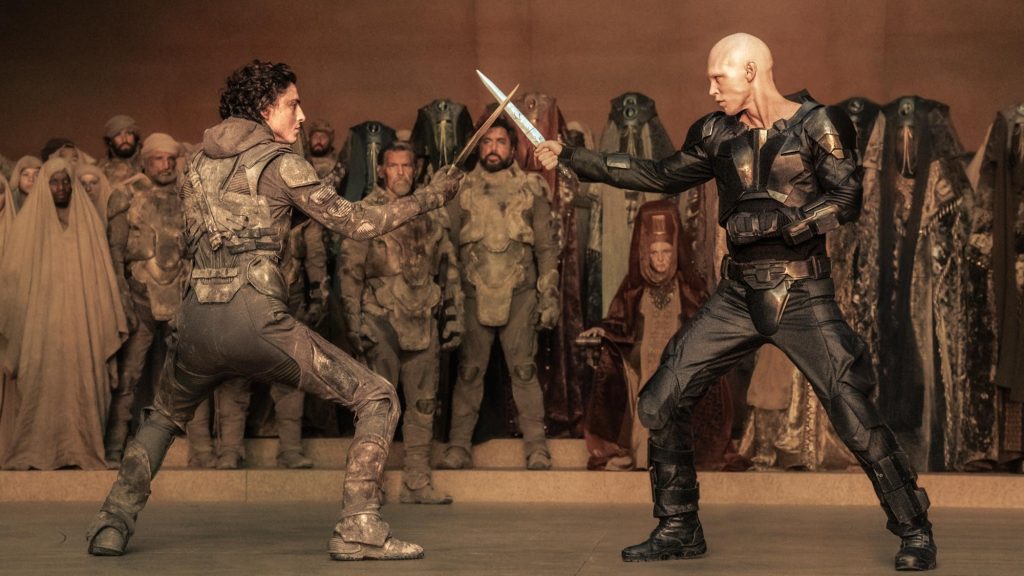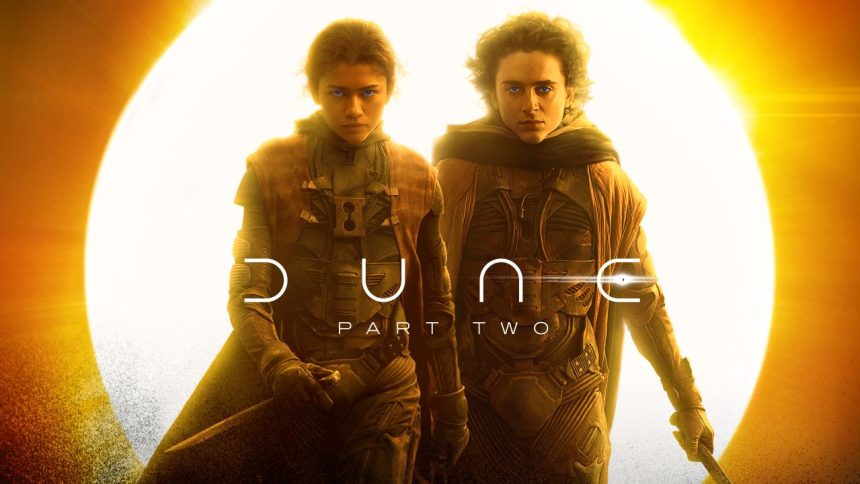Dune: Part Two by Denis Villeneuve is now available and promises to be an aesthetically spectacular continuation of the epic narrative. We come across a number of fascinating riddles and problems while we watch the movie, which emphasises both its grandeur and its complexity. Let’s take a closer look at these features.
Character Dynamics and Plot
The movie carries on the story of Paul Atreides (Timothée Chalamet), a messianic figure who is supposed to alter the destiny of the universe, and who has assumed the role of the Kwisatz Haderach. In the narrative, he leads the Fremen in an uprising against the tyrannical troops of House Harkonnen and their supporters. Even with the fanfare, there are a few unanswered narrative points.

Important Plot Points
Why Don’t the Fremen Make More Strategic Use of Their Sandworms and Lasers?
Despite having access to sophisticated weapons and dominion over enormous sandworms, the Fremen’s tactical choices look erratic. Why didn’t they launch their sandworms or aim their lasers at the sand harvesters during the previous battles?
Well, Why Fight Off-World?
Why do the Fremen board ships and fight off-world, rather of taking on their adversaries directly on Arrakis, where they have the advantage of sandworms?
Paul’s Strategy of Marriage and Intergalactic Jihad
What justifies Paul’s marriage to the daughter of the overthrown Emperor if his goal is to rule the galaxy? The other great houses don’t seem to be pleased with the union. And since he already controls the vital spice farms, why would he launch a galactic jihad?
The Bene Gesserit’s Power and the Emperor’s Intent
Was Leto Atreides (Oscar Isaac), Paul’s father, killed by the Emperor because he adhered to “the rule of the heart” alone, or was he also swayed by the Reverend Mother’s manipulations? To what extent does the Bene Gesserit play a role in the universe’s political intrigues?
Taking calculated risks and Paul’s foresight
After first resisting his fate, why does Paul decide to embrace it and drink the Water of Life all of a sudden? Does this abrupt shift suggest a response to Feyd-Rautha’s (Austin Butler) cunning use of artillery, which Paul was unable to anticipate?
Watch The Trailer Now!
Analysis of Strategic Decisions
| Strategy | Description | Impact |
|---|---|---|
| Fremen Lasers | Advanced technology available to the Fremen. | Could have been used to eliminate threats like sand harvesters earlier. |
| Sandworms | Giant creatures controlled by the Fremen. | Possessing a strategic advantage that was not fully utilized until later in the conflict. |
| Off-World Battles | Fighting in space rather than on Arrakis. | Reduces the strategic advantage of controlling Arrakis and its sandworms. |
| Paul’s Marriage | Marriage to the Emperor’s daughter as a political move. | Aims to consolidate power but does not effectively pacify the other great houses. |
| Galactic Jihad | Paul’s decision to wage a galaxy-wide war. | Suggests a desire to solidify control but is inconsistent with his existing power. |
| Water of Life | Paul’s sudden decision to drink the Water of Life. | Represents a pivotal character development but occurs abruptly in the film. |
| Artillery Usage | Feyd-Rautha’s tactical use of artillery. | A basic strategy that disrupts Paul’s plans and forces him to upgrade his prescience. |
Thematic Elements and Adaptation Choices
Dune is known for its rich thematic content, and Villeneuve’s adaptation tackles these themes with both fidelity and creative freedom.
Ecology and Politics
Frank Herbert’s original novel emphasizes the interplay between ecology, politics, and human ambition. Villeneuve’s adaptation retains the visual grandeur of this world but simplifies the intricate political and ecological discussions. The movie focuses more on delivering a thrilling spectacle rather than exploring Herbert’s detailed world-building.
The Role of Prescience
Paul’s prescience and his struggle with the future are central themes in the novel. In the film, this is portrayed visually with dramatic scenes, but the underlying philosophical questions are less explored. The abrupt transition in Paul’s character arc, including his decision to drink the Water of Life, reflects a cinematic approach that prioritizes visual impact over narrative depth.
Heroism and Villainy
The film presents Paul as both a hero and a villain. This duality is less about deep psychological conflict and more about creating compelling drama. The portrayal of Paul’s actions and motivations reflects a modern take on the antihero, but lacks the introspective depth found in Herbert’s text.
Key Takeaways
- Visual and Thematic Focus: Villeneuve’s Dune: Part Two excels in creating a visually stunning experience but simplifies the complex themes of Herbert’s novel.
- Strategic Inconsistencies: The film’s portrayal of military strategy and character decisions can seem inconsistent, focusing more on dramatic effect than on logical coherence.
- Adaptation Choices: Important elements from the novel, such as the role of the Bene Gesserit and the ecological discussions, are streamlined or omitted to fit the cinematic format.
Final Thoughts
Denis Villeneuve’s Dune: Part Two offers a breathtaking visual experience and a thrilling continuation of the saga. While the film may leave some plot points and thematic elements underexplored, it succeeds in delivering an engaging and visually spectacular adaptation. The film’s focus on dramatic visuals and action sequences highlights its intent to entertain rather than provide a comprehensive adaptation of Herbert’s complex narrative.
For viewers who have not read the books, the film stands as an impressive spectacle. For fans of the original novel, it represents a more streamlined and visually oriented interpretation of Herbert’s intricate universe. Despite its deviations, Dune: Part Two remains a significant cinematic achievement, capturing the grandeur of Herbert’s world while adapting it for the modern screen.





